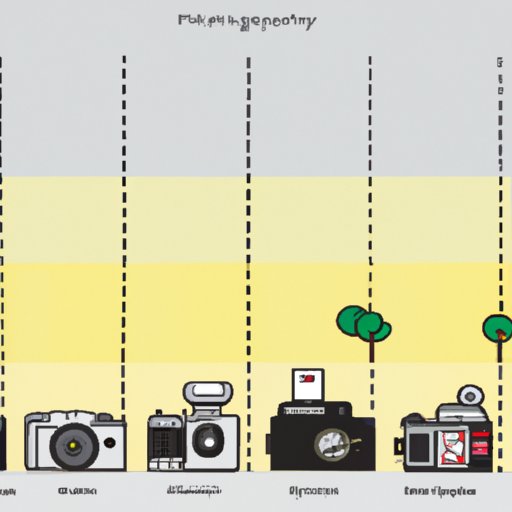Introduction
Photography has become an essential part of our lives. We use it to capture memories, document events, and tell stories. But who invented photography? To answer this question, we must first understand the definition of photography and its importance.
Photography is the art of creating images with light. It involves capturing light on a light-sensitive material, such as film or digital sensors, to create an image. The images can be manipulated in various ways to create different effects. This process has been used since the early 19th century and has become increasingly popular over time.
Photography has had a profound impact on the way we view the world. It has helped us document history, capture moments, and tell stories. It has also changed the way we view art and culture. So, let’s explore the history of photography and who invented it.
Historical Overview of the Invention of Photography
The invention of photography is credited to multiple people. However, the two most prominent pioneers are Nicéphore Niépce and Louis Daguerre. Both men were French scientists who experimented with the light-sensitive properties of silver salts. In 1826, Niépce used his heliographic technique to produce the world’s first photograph. He called it “View from the Window at Le Gras”. In 1837, Daguerre developed a new technique called the daguerreotype. This process allowed him to produce highly detailed photographs.
Other inventors also played a role in the development of photography. William Henry Fox Talbot, an English scientist, invented the calotype process in 1840. This process allowed for the production of multiple prints from a single negative. John Herschel, another English scientist, was responsible for the invention of the cyanotype process in 1842. He also coined the term “photography”.
These pioneers of photography helped to shape the art form and opened up new possibilities for the medium. Their inventions allowed photographers to experiment and expand their creative vision. It also allowed for the production of mass-produced photographs, which had a huge impact on society.
A Timeline of Photography’s Development
Let’s take a look at some of the key events that shaped the development of photography.
1826 – Nicéphore Niépce creates the world’s first photograph. Niépce’s heliographic process uses a camera obscura to capture an image onto a pewter plate coated with bitumen of Judea. This process produces a one-of-a-kind image that can only be viewed by using a magnifying glass.
1837 – Louis Daguerre develops the daguerreotype. Daguerre’s invention revolutionizes photography by allowing for the production of highly detailed photographs. It uses a silver-plated copper sheet covered with silver iodide, which is exposed to light and then developed with mercury vapor.
1839 – William Henry Fox Talbot invents the calotype process. Talbot’s invention allows for the production of multiple prints from a single negative. It uses paper negatives and salted paper prints, which are produced by coating paper with a mixture of salt and silver nitrate.
1841 – John Herschel coins the term “photography”. Herschel’s invention of the cyanotype process helps pave the way for the modern-day concept of photography. It uses ferric ammonium citrate and potassium ferricyanide to produce a blue-toned print.
1888 – George Eastman creates the first commercially available photographic film. Eastman’s invention of celluloid photographic film allows for the mass production of photographs. This breakthrough leads to the development of cameras that use roll film, paving the way for the modern-day camera.
Conclusion
The invention of photography has changed the world in countless ways. It has allowed us to capture and share moments in time, to document history, and to tell stories. The pioneers of photography paved the way for the development of the modern-day camera and opened up new possibilities for the art form.
Today, photography is an essential part of our lives. We use it to express ourselves, to show others our perspective, and to create beautiful works of art. Thanks to the invention of photography, we now have the power to capture moments in time and to share them with the world.
(Note: Is this article not meeting your expectations? Do you have knowledge or insights to share? Unlock new opportunities and expand your reach by joining our authors team. Click Registration to join us and share your expertise with our readers.)
